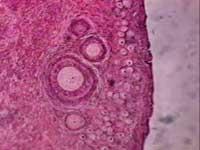Mouse eggs mature in vitro
Mammalian females, at birth, have millions of oocytes in the ovary. Only a few hundred of them arrive. The maturation process is very complex, but it allows obtaining eggs ready to fertilize.
According to a paper published in the journal Nature, scientists have now developed the method of maturation of mouse eggs in the laboratory. Izudo Hatada, researcher at the Gunma University of Japan, and his team have tested from the most immature eggs and the result has been unbeatable: after fertilization of eggs in vitro, they have obtained the following healthy.

The method is not simple: A mouse fetus of 12 and a half days has been torn off the ovary, obocytes have been taken and raised in vitro. 28 days later the oocyte DNA was ripe. The rest of the cell's components remained unripe. Therefore, through a procedure similar to that used in cloning, another mature egg has been removed from the nucleus and given the oocyte developed in the laboratory. The egg has been fertilized in vitro and placed in the uterus of a female mouse. In the end healthy mice were born.
According to researchers, the technique can be very useful for girls with cancer. In fact, chemotherapy sterilizes you, but if you ever want to be a child, before starting treatment you can remove and store ovaries. Thus, with the help of this technique they can have offspring. In addition, the presence of oocytes in the ovary much higher than those that mature spontaneously allows obtaining numerous eggs, and may be interesting to save endangered species or to obtain genetically modified animals by cloning techniques.
However, to do the same with human oocytes, researchers believe that it still takes about five years, as mouse oocytes arrive in just over a month, while women need about six months to arrive. Moreover, it would not be surprising that the techniques generated a debate on ethics.
Buletina
Bidali zure helbide elektronikoa eta jaso asteroko buletina zure sarrera-ontzian











